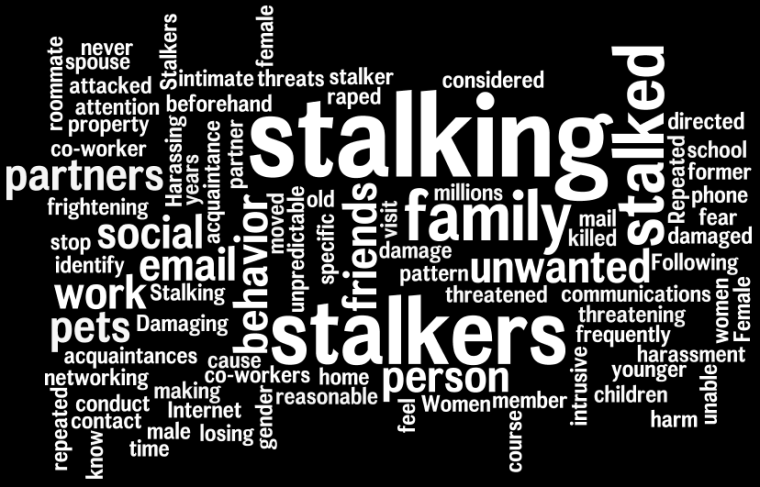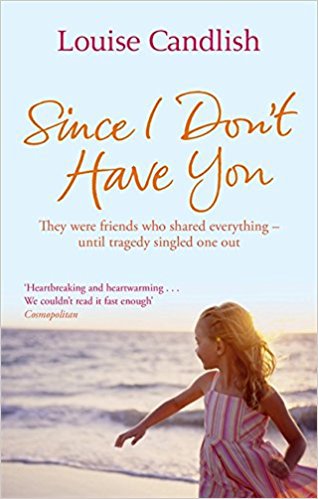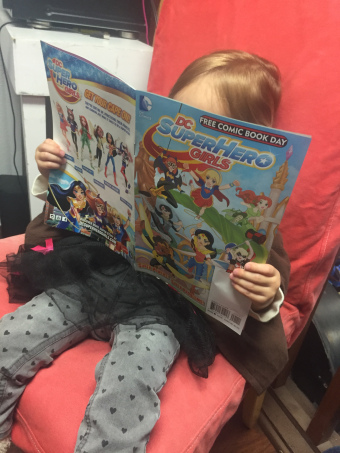Sometimes a story appears that lingers after I close the cover. The Last Neanderthal, or rather, Girl, who is the last Neanderthal, affected me like this.
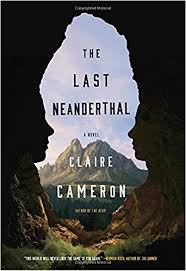
I have a profound affection for the past and the ancestors; a respect for Indigenous ways. Perhaps that is why. One of my first anthropology papers (in the early 90s) was titled “Neanderthal: the First Humanitarians”. In it, I argued that the people were much like us, that they buried their dead and left flowers on their graves. This homage to those we love shows our humanity.
Cameron’s novel interweaves the stories of two women at key junctures in their lives. One is an archaeologist, named Rose Gale, who discovers a curious grave; the other, our teenage Neanderthal: the “object” of Gale’s efforts. Both are driven. Both are pregnant. But that is where the similarity ends.
I don’t like Rose. She is ambitious, obsessed, fearful of losing control of her work because of her pregnancy. The modern woman? She seems disconnected from her partner and her baby. Alongside Girl, Rose Gale is annoying and self-centred; at least, until she births her baby and accepts her tribe.
If Cameron’s purpose is to reveal how far homo sapiens sapiens (ironically: wise wise man) has strayed from humanity in his quest for knowledge and fame, she’s done a remarkable job.
Who Were They?Hunters, 40,000 years distant, Girl’s family are fused with the land and with each other. Neanderthals are so named because of bones unearthed in the Neander River valley in Germany. The species evolved in Europe and inhabited Eurasia. Though they are now extinct, their DNA survives in us; meaning, they interbred with us. The author, Claire Cameron, says that she is 2.5% Neanderthal according to 23andme. And National Geographic says that you or I could carry Neanderthal DNA:
Big MotherEveryone living outside of Africa today has a small amount of Neanderthal in them, carried as a living relic of these ancient encounters. A team of scientists comparing the full genomes of the two species concluded that most Europeans and Asians have between 1 to 2 percent Neanderthal DNA.

Girl’s family live within a territory under the leadership of Big Mother, a stern loving matriarch who wears a headress of horns to highlight her status. They hunt bison and trap salmon during the spawn.
They are few: Him, Bent, Girl, Runt. And use few words.
There was a stillness to her culture. There were few points of contact between families. Changes rarely had a chance to spread. There were no other ways to live. Other words weren’t needed. The family knew how things were done (220).
Cameron has given them limited vocabulary. Aroo seems multi-purpose — Hey, how’s it going? I’m back. Do you see me? Check this out. And pitch, which means, “keep your head attached to your meat and your family attached to the land.”
Singing the Soul of the LandGirl’s family have much to teach us about our relationship with the land. Using pathetic fallacy, this poetic author sings to us of nature and our interconnectedness through Girl’s soul.
She put a foot on a sturdy branch and held the trunk with arms wrapped tight. She pressed her body against it. The warm trunk pulled her in and her body melted into the trunk like softened sap. Her limbs stretched down to dirt, and sap ran in her veins as if it were blood. This was the strength of the forest…The trees stood together like the whole body of a family lining the ridge. The swaying branches talked and told one another of what they saw. One flicked a branch. A few dead leaves that still clung after the winter storms rustled. The limbs let the secrets pass among them. Twigs snapped and the needles clattered together in discomfort. They swayed with sadness…If Girl watched and felt the patterns in the leaves, she could read them (119).
Girl knows nature and all within it are alive and sentient. When she sees slashes on a tree she is horrified. “It hurt the tree, just like cutting skin. Its sap had bled and bubbled up from the wound. To Girl it was a kind of senseless violence” (219). She feels and senses the nature around her: “Soon the yolk of the sun cracked into the sky and colour bled” (143). It is this consciousness that keeps her alive in wild terrain where all carnivores vie with each other for meat. And she is meat herself.
RelationshipsEarly in the story, Girl’s family are attacked by leopards and she is left with Runt, a seven-year-old boy who Big Mother adopted. He is different from them in many ways. Smaller and finer-featured, his skin is charcoal, his hair “like moss”. He eats green plants (yuk) and jabbers too much (he’s a Crowthroat). His walking gait is more “elegant” and he likes to wear the skins of animals on his feet to protect them. Clearly, Runt is from another tribe, even another species.
Along with Wildcat, Runt becomes her travelling companion for over a year. Girl is pregnant by He (her older brother). Though incest is a taboo taught through shadow stories by Big Mother, Girl comes into heat and seduces Him, urged by a force too great to control.
From cover to final photograph, we are teased with the image of two skeletons who face in as if looking into each other’s eyes. Found together in the same stratum, they are clearly different species. One is our Neanderthal, Girl; the other is modern man. The archaeologist’s quest is to bring this story to light.
In the end, we do not see that final burial. They are touching noses: the gesture of affection Girl learned from her pet, Wildcat. But, we do not know how or why they ended up together. We are left to ponder. Is this Runt? Did Girl and Runt mate? (She is only six or seven years older than he is.) Or, is this the gaze of mother-child devotion? Is she his Big Mother and he her child? Or, did Girl survive long enough to find a new mate among Homo Sapiens Sapiens? I am troubled by this. After all her near deaths, I want to know how dead wood comes for Girl.
Dead WoodIt is their custom to excavate a hole and bury the body beneath a living tree. Thus, when a body dies it becomes wood. I love this. Let my body feed a tree. Drag the stones from our graveyards and plant trees. Leave our bones in peace. Leave our trees in peace. Let us nurture one another.
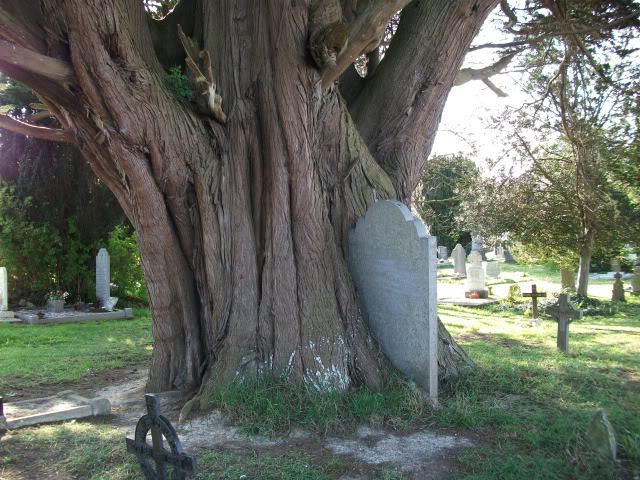
Large Irish yew tree in St Colmcille’s graveyard
Share this:
